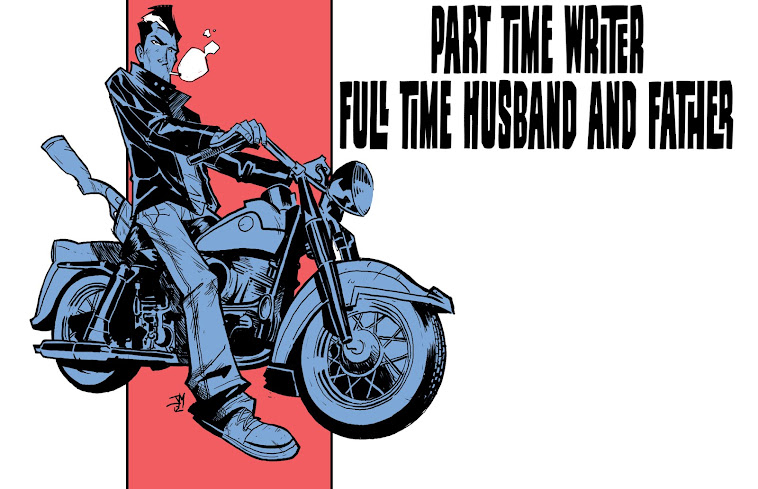Now to continue on with the talent that is known as Jeff Winstead. As I pointed out in my last post, the overall appeal of Jeff's art to me is his sense of design. This comes through in his pages, character designs, logos, etc. His designs have a sense of familiarity without looking generic. Case in point is the Vic Boone logo.
He actually has an entire post about the approach he took in it's design. Found here. It's worth a read.
What I appreciate about this design is it fits the feel of Vic Boone so well. It says "pulp" without looking overly forced or a knockoff. As an aside, it was pretty clever of Winstead to ensure himself of a cut of all Vic Boone related material by designing this. Kidding, Jeff.
Other examples of his logo design work can be found here and here. The first link is to the logo he designed for the Strange Fiction anthology. He goes into the process for designing it. Again, worth a read. The second is the logo for his own creator-owned series, The Alternate.
Let's call the Strange Fiction logo a distant cousin to the Vic Boone logo. It falls in the same realm/school as Vic Boone, but still manages to carry its own uniqueness. He didn't just rehash what he had done on Boone's logo. Again, it's just familiar enough that your mind immediately knows what it conveys, but doesn't spur thoughts of "been there, done that."
The Alternate shows the variety in Winstead's designs. He's not a one trick pony. But it does exactly what the other examples do--convey a sense of what the work is about. For me, this logo looks like it could have easily been on the cover of a late 70s or early 80s Big Two book. It says, This is a superhero book. You can look at that logo and know what you're more than likely to get on the inside. You know what's being brought to the table, which is what any good logo should do. For me, a logo can make or break a book. Jeff understands this and it shows.
All three examples show another subtle approach that sometimes gets overlooked in logos--They work in a variety of colors. They aren't reliant on being only blue and white or whatever the case may be. They also, more importantly, work on anything. They don't just look good on a comic cover. Put them on a shirt, pin, hat, etc and they still hold up. They're still able to convey their purpose. I think some artists get hung up on making these radical designs that look great on paper but lose their weight when placed in any other environment. Jeff knows how to balance "cool design" with "needs to serve multiple mediums." He knows when to hold them, knows when to fold them.
Well, it looks like this Spotlight is getting broken up into three parts. Silas has decided his morning nap shall be only an hour long, instead of two. Next time I'll delve into Jeff's character design work.









